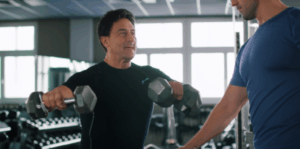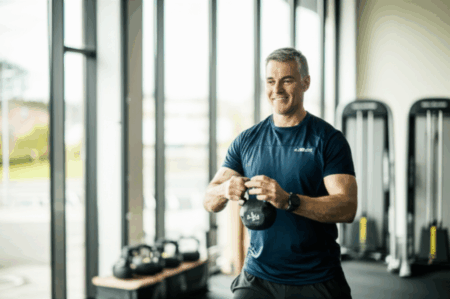In the pursuit of fitness, many enthusiastically hit the gym, eager to build strength, improve health, and achieve their desired physique. However, the very routines designed to sculpt healthier bodies could be laying the groundwork for serious injuries. An orthopaedic surgeon recently issued a stark warning: unsupervised workouts, incorrect form, and the relentless push for “more” can transform your fitness journey into a pathway to orthopaedic problems, potentially leading to chronic pain or even surgery.

The Orthopaedic Surgeon’s Critical Warning
According to Mumbai-based orthopaedic surgeon Dr. Amyn Rajani, unsupervised or unguided workouts are a primary cause of gym injuries. Many individuals are guilty of rushing progress, often by copying “pros” without understanding the context or lifting more weight than their bodies can safely handle. While the immediate consequence might be sore muscles, the long-term price could be severe, even irreversible, injuries. Dr. Venkatesh Movva, another orthopaedic doctor specializing in Sports Medicine, similarly cautioned against several popular exercises, highlighting their potential for injury.

Common Gym Injuries: What’s Going Wrong?
Gyms, despite their health benefits, are environments where injuries can occur if proper precautions aren’t taken. Statistics show a significant number of emergency room visits due to gym-related incidents. Orthopaedic surgeons frequently encounter specific injuries stemming from poor workout practices:
- Lumbar Strains: Often result from improper technique during weightlifting, particularly when the lower back is not kept straight.
- Hamstring Strains and Pulled Groins: Occur when muscles in the thigh and pelvic area are overstretched too quickly, usually due to insufficient warm-ups or rapid, uncontrolled movements.
- Rotator Cuff Tendonitis and Tears: These shoulder injuries are frequently overuse-related, stemming from repetitive motions, heavy lifting, or allowing hands to go behind the head during exercises, placing undue strain on the shoulder joint.
- Knee Injuries: Common issues include cartilage damage, meniscal tears, and even ACL tears, which can result from high-impact activities, sudden movements, or incorrect squatting and lunging techniques.
- Fractures or Broken Bones: Dropped weights are a direct cause, often leading to injuries in the toes or other foot bones. Stress fractures, thin cracks in bones, particularly in the lower leg and foot, result from excessive, repetitive stress.
- Rhabdomyolysis: A severe condition where muscle tissue breaks down due to overexertion, releasing proteins that can damage the kidneys.
The Peril of Improper Form
One of the most significant contributors to gym injuries is improper exercise form. When technique is compromised, the body compensates, placing unnecessary stress on joints, ligaments, and unintended muscle groups. For example, when performing a squat with incorrect form, the lower back may take on the load meant for the quadriceps, glutes, and hamstrings, leading to lumbar strains or herniated discs.
Proper form is crucial not only for injury prevention but also for exercise effectiveness. It ensures that the target muscles are correctly engaged, leading to better results, improved posture, and a wider range of motion. Conversely, bad form can make a workout less efficient, cause fatigue more quickly, and lead to muscular imbalances.
Overtraining and Its Systemic Impact
Beyond acute injuries from poor form, overtraining poses a significant, often insidious, threat. Overtraining occurs when the intensity and volume of exercise exceed the body’s ability to recover. This relentless strain prevents muscles from repairing and rebuilding, leading to a state of chronic fatigue rather than adaptation and strength.
The physical dangers of overtraining include:
- Increased Risk of Injury: Continuous strain without adequate rest heightens the risk of overuse injuries like stress fractures, tendonitis, and muscle strains.
- Weakened Immune System: Overtraining taxes the immune system, making individuals more susceptible to infections and illnesses.
- Decreased Performance: Paradoxically, overtraining leads to reduced strength, endurance, and overall athletic performance.
- Hormonal Imbalance: High physical stress can disrupt hormones, increasing cortisol (the stress hormone) and potentially decreasing hormones vital for muscle growth and repair, leading to fatigue and mood swings.
- Cardiovascular Stress: Excessive cardiovascular exercise can lead to an elevated resting heart rate and, in extreme cases, heart arrhythmias.
Overtraining also has a profound impact on mental health, causing irritability, anxiety, depression, and sleep disturbances.

Essential Strategies for a Safer and More Effective Workout
Preventing orthopaedic injuries in the gym requires a mindful and informed approach. Experts emphasize several key strategies to ensure your routine is doing good, not harm.
Prioritize Proper Form and Technique
This is arguably the most critical aspect of injury prevention.
- Learn Correct Movement Patterns: For every exercise, understand and practice the correct technique. This can be achieved by working with a certified personal trainer, especially when starting a new routine or using complex equipment. Even a session or two with a reputable trainer can provide invaluable guidance.
- Focus on Core Strength: A strong core (abdominals, glutes, and back muscles) is foundational for proper posture and stability during almost all exercises, reducing strain on other joints.
- Avoid “Ego Lifting”: Never sacrifice form for heavier weights. Lifting too heavy with bad form is a common cause of serious injury. Focus on engaging the correct muscles rather than just moving the weight.
Embrace Smart Progression and Rest
Sustainable progress comes from a balanced approach, not relentless intensity.
- Warm-Up and Cool-Down: Always begin with a dynamic warm-up (5-10 minutes of movements that mimic your workout) to increase blood flow and muscle flexibility. Conclude with a cool-down, gradually lowering your heart rate and performing passive stretches to aid recovery.
- Gradual Increase in Intensity: Avoid pushing yourself too hard, too fast. Gradually increase the duration, intensity, and frequency of your workouts to allow your body to adapt. A good rule of thumb is to increase workload by about 20% per week.
- Incorporate Rest Days and Cross-Training: Rest days are crucial for muscle repair and recovery. Cross-training, by engaging different muscle groups through varied activities (e.g., swimming, cycling, yoga), helps prevent overuse injuries and promotes overall fitness.
- Prioritize Sleep: Quality sleep is essential for recovery and hormonal balance, directly impacting physical performance and injury prevention.
- Fuel Your Body Properly: A well-balanced diet rich in protein, fruits, vegetables, and water supports muscle growth, repair, and overall bone health.
Listen to Your Body and Seek Professional Advice
Your body provides critical signals that should never be ignored.
- Don’t Ignore Pain: Persistent pain, swelling, instability, or reduced range of motion are red flags that warrant attention. “I would never say to power through a sudden pain in a workout,” advises physical therapy manager Melanie McNeal.
- Consult a Professional: If you experience pain or are unsure about your form, seek advice from a doctor, physical therapist, or certified personal trainer. Early intervention can prevent minor issues from becoming major injuries.
- Wear Appropriate Gear: Quality shoes with adequate arch support are crucial for protecting feet and joints, especially in activities involving repetitive impact.
Consider Exercise Alternatives
Some orthopaedic experts advise caution or suggest alternatives for certain exercises, particularly for those without perfect form or muscle balance:
- Overhead Presses (e.g., Military Press): Dr. Venkatesh Movva suggests avoiding heavy overhead exercises due to the potential for shoulder injury. Alternatives include bending down and raising weights or front raises.
- Crunches: Crunches can put strain on the spine. Dr. Movva recommends planks and bridges as safer and more effective core-strengthening exercises.
- Deadlifts: While popular, deadlifts carry a high risk of injury, especially to the spine, if performed with incorrect form or excessive weight. An alternative for leg strength, as suggested by Dr. David Abbasi, is the leg press, which allows heavy lifting without axial load on the spine.
The gym can undoubtedly be a powerful tool for enhancing health and longevity. However, it requires an informed and cautious approach. By prioritizing proper form, embracing smart progression and recovery, and listening to your body’s signals, you can safeguard your orthopaedic health and ensure your gym routine truly contributes to your well-being, rather than causing harm.







